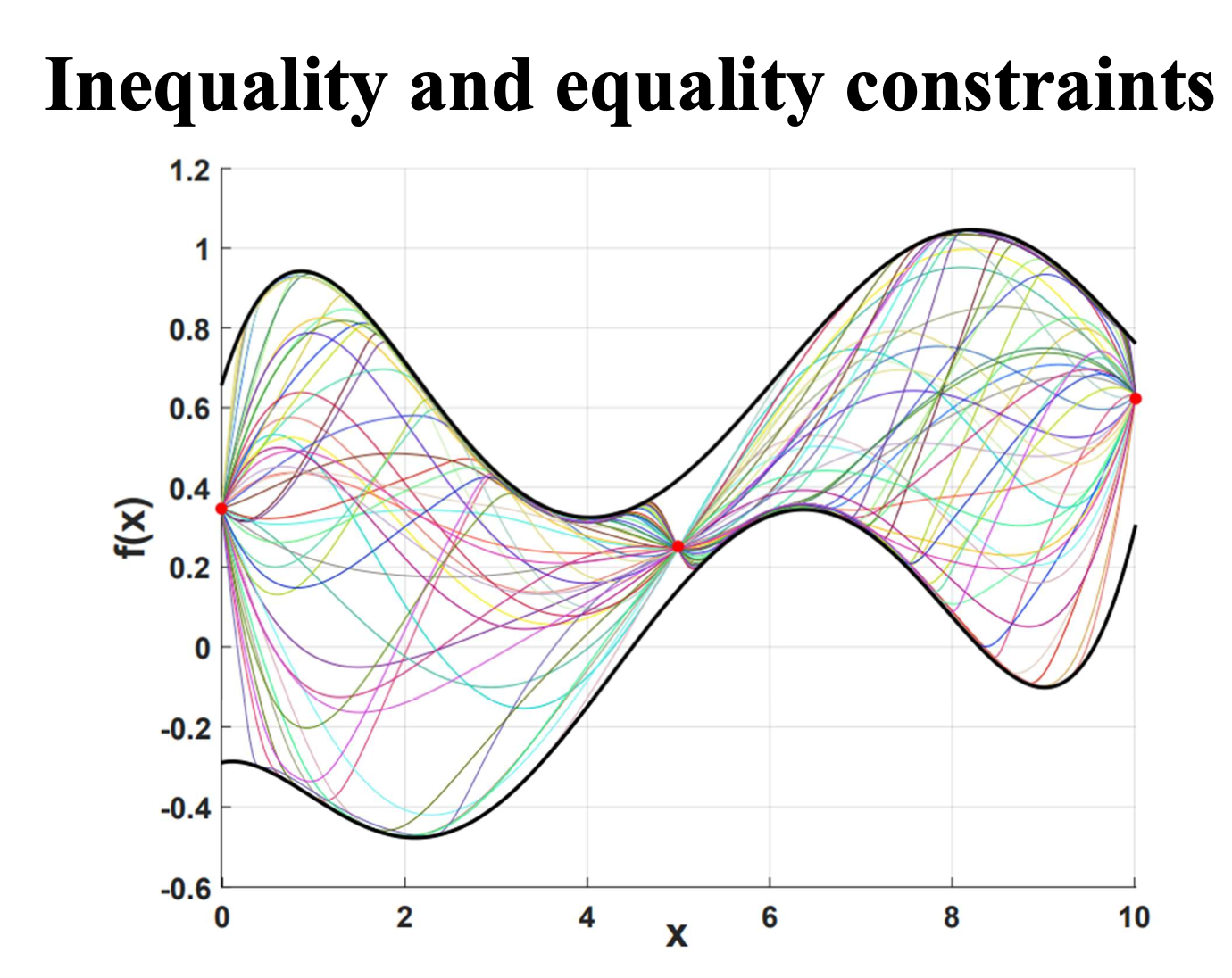
This lecture summarizes what the Theory of Functional Connections (TFC) is and presents the most important applications to date. The TFC performs analytical functional interpolation. This allows to derive analytical expressions with embedded constraints, expressions describing all possible functions satisfying a set of constraints. These expressions are derived for a wide class of constraints, including points and derivatives constraints, relative constraints, linear combination of constraints, component constraints, and integral constraints.
An immediate impact of TFC is on constrained optimization problems as the whole search space is reduced to just the space of solutions fully satisfying the constraints. This way a large set of constrained optimization problems are turned into unconstrained problems, allowing more simple, fast, and accurate methods to solve them. For instance, TFC allows to obtain fast and machine-error accurate solutions of linear and nonlinear ordinary differential equations.
TFC has been extended to n-dimensions (Multivariate TFC). This allows to derive efficient methods to solve partial and stochastic differential equations. This lecture also provides some examples in aerospace applications as, for instance, accurate perturbed orbit propagation, perturbed Lambert problem, energy-efficient docking, and energy (or fuel-efficient) optimal landing on large bodies.
10/07/2020
The webinar can be reached at this Goggle Meet link:
meet.google.com/ain-yyvs-vud
at 4:00pm (Italian time)
Daniele Mortari is a Professor of Aerospace Engineering at Texas A&M University, working on the field of attitude and position estimation, satellite constellation design, sensor data processing, and various topic in linear algebra and numerical algorithms. In addition, he has taught at the School of Aerospace Engineering of Rome’s University, and at Electronic Engineering of Perugia’s University, both in Italy. He received his dottore degree in Nuclear Engineering from University of Rome “La Sapienza,” in 1981. He has published more than 300 papers, holds a U.S. patent, and has been widely recognized for his work, including receiving best paper Award from AAS/AIAA, best paper from Journal Mathematics, two NASA’s Group Achievement Awards, 2003 Spacecraft Technology Center Award, 2007 IEEE Judith A. Resnik Award, and 2016 AAS Dirk Brouwer Award. He is an IEEE and AAS Fellow, an AIAA Associate Fellow, an IAA Corresponding member, an Honorary Member of IEEE-AESS Space System Technical Panel, and a former IEEE Distinguish Speaker.